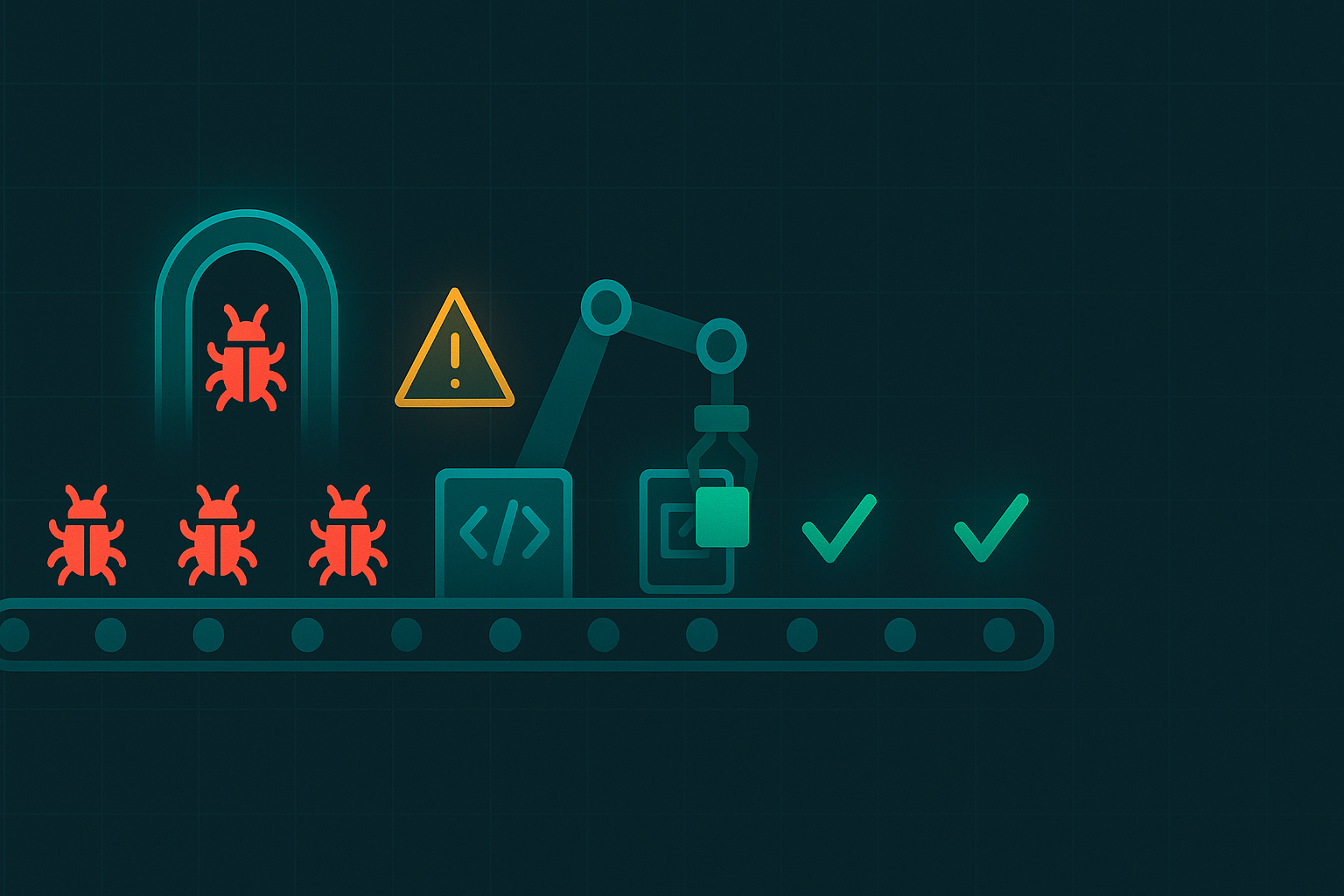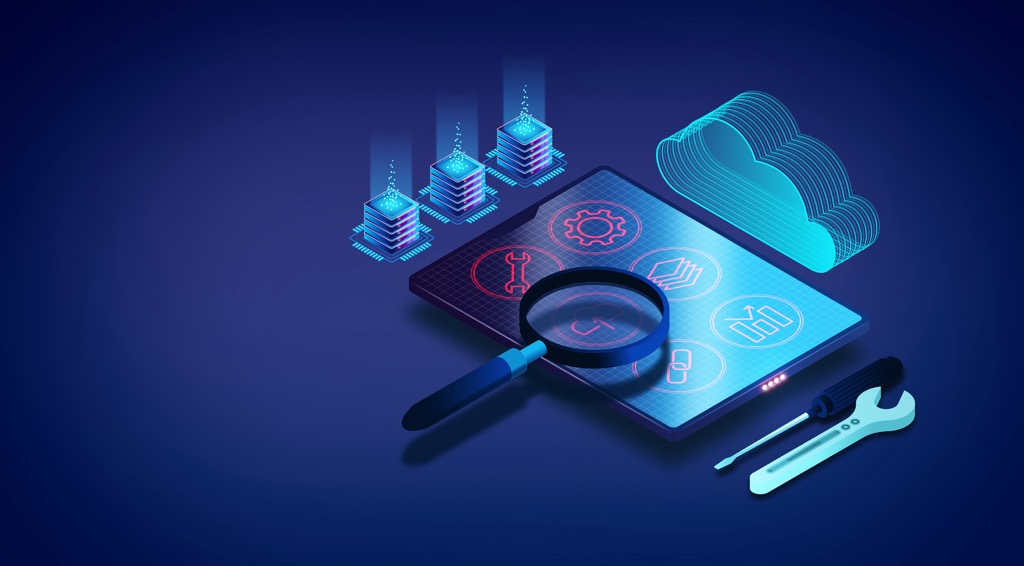DerScanner > Blog > 10 Auto Remediation Tools: SAST Code Remediation

10 Auto Remediation Tools: SAST Code Remediation
Keeping your app safe is really important, and auto remediation makes that job easier. Instead of spending hours looking for bugs and fixing them by hand, developers can let smart tools do it automatically. That means more time to focus on building cool features. When it comes to AI code remediation, artificial intelligence steps in to find and fix code problems fast. One great example is static application security testing SAST tools.
SAST tools scan your source code and look for security issues early. Most teams now use them in their CI/CD pipelines to automate security processes. So while the code is being written and tested, these tools are already checking and fixing things in the background. It’s a smart way to stay ahead of security risks.
What is Auto Remediation?
Auto remediation is when a system can spot and fix issues like bugs or wrong settings without someone needing to do it manually. It’s mostly used with tools like SAST and DAST, which scan for issues and then suggest how to fix them. That makes things a lot easier and helps keep your software safe.
Over the years, this idea has really grown. At first, it was just some simple scripts doing basic fixes. Now it has advanced and matured: it can use AI and machine learning to understand things better, and it easily integrates modern DevOps tools. It has become very important for developers who want to fix things fast and stay safe at the same time.
What is Code Remediation?
Code remediation is the process of finding, understanding, and fixing security problems in the application source code. It is the key part of secure coding practices and usually involves tools like SAST scanners, linters, and manual code reviews. If you're new to using these tools, a simple SAST scanner guide can help you understand how to get started.
Traditional code remediation depends a lot on developers to fix issues by themselves. But now, automated code remediation and AI code remediation are helping developers by using artificial intelligence to suggest or even apply fixes directly in the code. This way, developers can stay focused on building features while still keeping code security strong throughout the software development lifecycle.
AI-assisted code remediation works especially well for fixing common vulnerabilities, such as buffer overflows, SQL injections, cross site scripting, and remote code execution. These tools look at the code patterns, context, and past changes to suggest accurate fixes with little human effort.
What is Auto Remediation in Cloud Security?
In cloud environments like AWS, auto remediation in cloud security focuses on identifying misconfigurations, unsafe IAM policies, and insecure network settings. Tools such as AWS Config automatic remediation allow organizations to define rules and corrective actions that are triggered automatically when non-compliant resources are detected.
For example, auto remediation AWS workflows can automatically isolate a compromised server, update IAM roles, or disable insecure ports to reduce response time to seconds. When configured correctly, these workflows help enable automatic remediation for software update errors and thereby eliminate one of the common attack surfaces in cloud applications.
Cloud-native SAST and DAST tools are now getting even better. They’re starting to give real-time feedback on security issues, and what's more, they’re beginning to include auto remediation as a main feature too. This approach is essential for modern cloud-native application security strategies.
How AI Code Remediation Helps With Code Security
AI-driven remediation tools help developers fix code flaws faster by scanning large codebases and suggesting instant solutions. SAST AI tools identify vulnerabilities and provide clear fix instructions. Many modern platforms integrate these tools to find and resolve issues early during development. By connecting with build tools and source control platforms, these tools make code security a built-in step, not something added later.
The Groundbreaking Approach of DerTriage and DerCodeFix AI
Most vulnerability scanners dump hundreds of findings on security teams without context. DerTriage does something different. It examines the actual code structure, understands how different frameworks work, and considers the specific business logic before deciding if a vulnerability is real.
Traditional tools flag potential issues based on simple patterns. If they see something that looks like an SQL injection, they alert. DerTriage digs deeper. It looks at how the code connects to databases, whether input validation is performed, and if the framework already provides protection. This means fewer false alarms and more time spent on actual problems.
DerCodeFix takes a similarly practical approach to fixes. Rather than suggesting generic "sanitize your inputs" advice, it examines the exact code causing the issue and writes the specific patch needed. It understands the difference between fixing a Node.js Express app versus a Spring Boot application, and provides fixes that work within each framework's conventions.
The two tools work together in a way that competitors don't match. DerTriage confirms which vulnerabilities are worth your attention, then DerCodeFix shows exactly what code changes are needed.
Top Auto Remediation Tools for Code Security
A strong suite of auto remediation tools is critical for organizations aiming to implement secure development pipelines. The following are some of the most prominent tools in the space:
1. Derscanner
DerScanner is an easy-to-use yet powerful tool that helps keep your applications safe. It combines SAST, DAST, and SCA, all in one platform. What makes it special is how it uses AI-powered technology to find problems in your source code, and even while the app is running. It gives helpful remediation guidance and works well with CI/CD tools, which means you can catch and fix problems as you build. DerScanner supports over 40 programming languages, so it fits into almost any team’s workflow. Overall, it's one of those auto remediation tools that really helps with vulnerability remediation in a simple and smooth way.
Derscanner Features
- On-premises deployment keeps intellectual property protected
- Air-gapped environments for organizations with strict security requirements
- Zero data sharing with external services
- Offline processing
- DerTriage for context-aware analysis that cuts through false positives
- DerCodeFix for production-ready code patches rather than generic advice
- Clear explanations for every security decision and suggested fixes
2. GitHub Advanced Security
GitHub Advanced Security offers a powerful combination of SAST tool functionality and intelligent code autofix through its integration with GitHub Copilot. It can detect a wide array of vulnerabilities in real-time during pull requests and automatically suggest changes that align with secure coding practices. By using machine learning models and vast repositories of open source data, it allows for automated code remediation and significantly reduces the burden on developers, particularly in identifying complex issues like remote code execution.
3. GitLab Ultimate
GitLab Ultimate integrates security deeply into CI/CD pipelines. Its SAST AI checker can identify security risks in open source and private codebases while minimizing false positives. With automated issue creation and remediation guidance, it improves developer workflows by embedding intelligent code fixes within GitLab Merge Requests. This helps teams identify and fix vulnerabilities without leaving their environment.
4. AWS Security Hub
Auto remediation becomes a reality with AWS Security Hub, which consolidates findings from AWS services and third-party tools. It works together with GuardDuty, Macie, and AWS Config to fix issues automatically and stay compliant. For example, it can block insecure ports or fix IAM policy mistakes. Security Hub gives a clear view of problems and helps auto-remediate software update errors and other cloud issues.
5. SonarQube with AI Plugin
SonarQube has long been a go-to Code Quality tool, and with its new AI plugin, it now supports intelligent SAST remediation. This tool uses AI to scan your code and spot threats like XSS, buffer overflows, and SQL injections. It suggests code fixes and uses filters to cut down on unnecessary warnings. Since it supports many languages and connects easily with your favorite IDEs, it’s a great way to build safer apps without wasting time.
6. Veracode Fix
Veracode Fix offers a high level of automation in vulnerability remediation through its AI remediation engine. It not only detects flaws but also recommends vetted fixes using a massive vulnerability database and curated remediation guidance. The platform supports integration into build pipelines and works smoothly with both open source and enterprise code, helping to lower the cost of fixes since, as the adage goes, SAST is more expensive to fix vulnerabilities late in the lifecycle.
7. Checkmarx One
Checkmarx One is an enterprise-grade SAST tool that uses AI-powered techniques to enhance code security. Its unified platform offers visibility into application risks and integrates with SCM and CI tools for continuous scanning. The tool supports AI-driven SAST analysis and auto-fixes for complex bugs. With customizable policies and smooth DevSecOps integration, Checkmarx One helps teams identify and resolve detected issues before they hit production.
8. Fortify on Demand (HPE)
Fortify on Demand provides static application security testing (SAST) along with detailed remediation guidance to developers. It uses AI code remediation for quick fixes and supports multiple coding languages. Its cloud-based model allows teams to scan, assess, and patch applications without having to install or maintain infrastructure. The platform performs well in its ability to detect and fix a remote code execution vulnerability and other complex threats using proven AI models.
9. CodeQL (by GitHub)
CodeQL is a semantic code analysis engine that enables teams to write custom queries for identifying vulnerabilities across massive codebases. It integrates deeply with GitHub Actions and supports autofixing via GitHub Advanced Security. With a growing set of community-curated queries and AI-powered enhancements, it offers targeted AI remediation capabilities. This is particularly useful for analyzing AI generated code or large-scale open source projects with unique security needs.
10. Aqua Trivy + Tracee
Aqua Security offers two open-source tools, Trivy and Tracee, for vulnerability scanning and runtime security. Together, they bring both SAST and behavioral analysis into cloud-native environments. Trivy supports auto remediation of known CVEs in containers, while Tracee captures and analyzes real-time events to flag suspicious behavior. These tools help maintain secure configurations and facilitate AI-based SAST remediation workflows in containerized development setups.
AI SAST and Its Benefits
AI SAST represents a transformation from traditional static analysis into intelligent, contextual vulnerability detection. Where older SAST tools might flag a potential vulnerability without understanding the business logic or code context, AI-driven models excel in reducing noise and false positives.
Reducing SAST false positives is one of the key benefits of AI based SAST. Traditional systems often overwhelm developers with unverified threats, while AI-driven SAST learns from historical code patterns, issue resolutions, and best practices to present only actionable issues.
Other benefits of AI SAST include:
- Context-aware vulnerability detection
- Intelligent code remediation suggestions
- Continuous learning and adaptation to new threats
Understanding Automatic Remediation
Automatic remediation has become a major focus for DevSecOps teams, thanks to its ability to provide zero-touch vulnerability fixes. However, while auto remediation is highly effective, it's not without limitations.
There are cases where automatic remediation failed, especially when code logic is highly specific or where AI makes incorrect assumptions about intended functionality. In such cases, manual review and correction remain essential.
Despite these challenges, platforms continue to improve. For example, combining SAST AI checker outputs with manual triage systems allows teams to strike a balance between automation and control.
Best Practices
- Always review remediation guidance for high-severity issues
- Use SAST tool recommendations as a baseline
- Combine automated tools with periodic manual code reviews
- Ensure CI/CD pipelines fail when detected issues exceed thresholds
The Future of Code Security with AI and Automation
Now that organizations are using AI and automation more in their security efforts, auto remediation combined with AI code remediation is becoming really important. Modern SAST and DAST tools not only identify vulnerabilities like SQL Injections and Cross-Site Scripting, but also act upon them intelligently and provide real-time suggestions or even autofixes.
Developers can now benefit from these innovations within their favorite development environments and thereby eliminate context switching and improve overall security awareness.
As more applications are generated by machines, the need for machine-driven security solutions becomes even more critical.
To meet this challenge, companies are increasingly turning to:
- AI-powered SAST solutions trained on open source datasets
- Security coding best practices embedded into code generators
- End-to-end security integration from design to deployment
Conclusion
The use of auto remediation tools, AI-enhanced SAST, and secure coding practices is changing how we handle software security. Today, apps are launching within days or hours, and therefore, securing code throughout the SDLC is a must.
From spotting vulnerabilities like buffer overflows, remote code execution, and XSS, to giving clear remediation guidance and reducing human mistakes, AI and automation are shaping secure software development. If you’re working with auto remediation tools, it really pays off to get started early. This way, you can stay ahead of any risks and keep things running smoothly.
Using AI remediation, and auto remediation tools lowers threats and keeps development agile, safe, and future-ready.
Share with:
You will definitely like these articles

SDLC, or How to Make Development More Secure?
2022-10-24
Reducing SAST False Positives: A Guide to Efficient Vulnerability Management
2024-09-16
